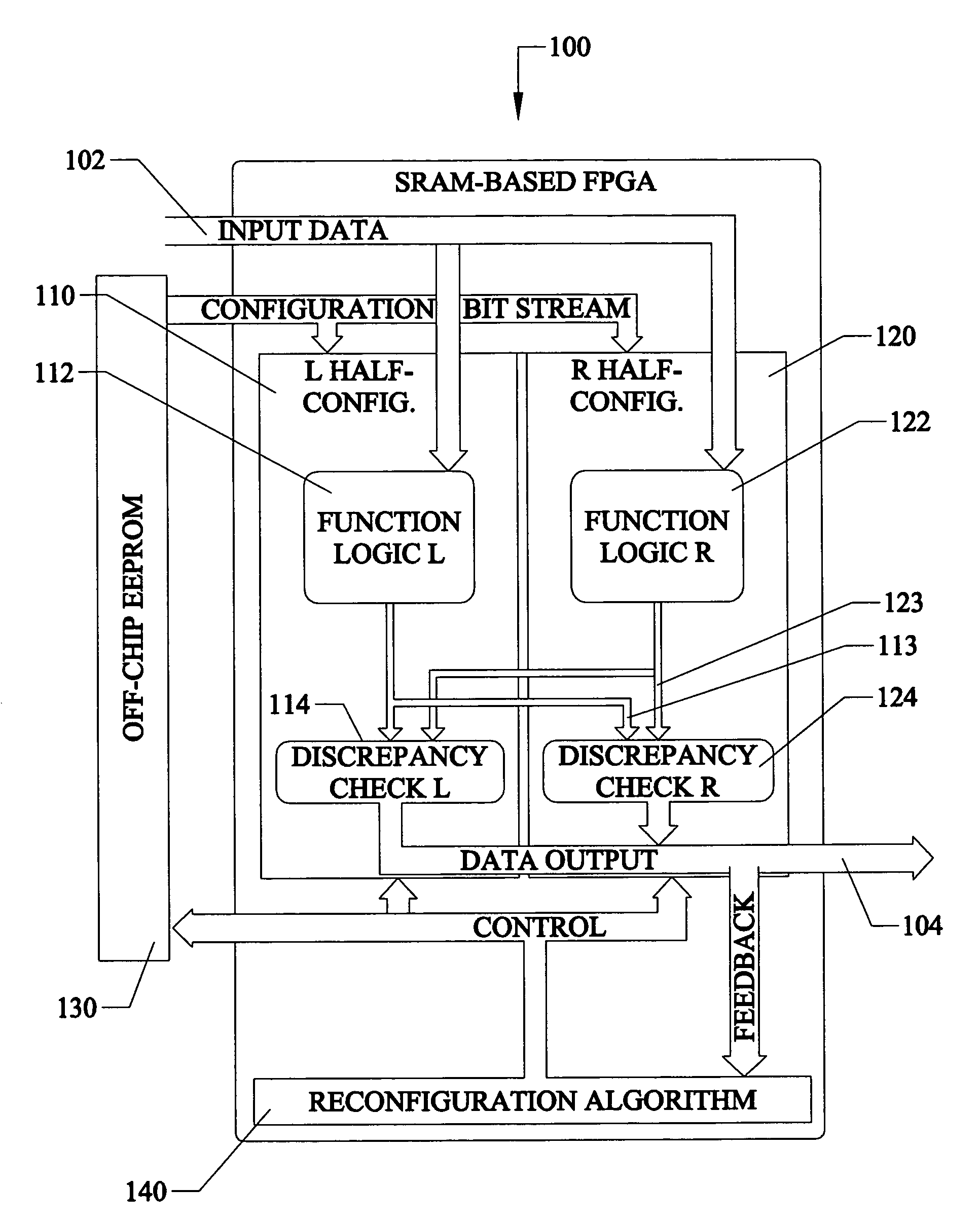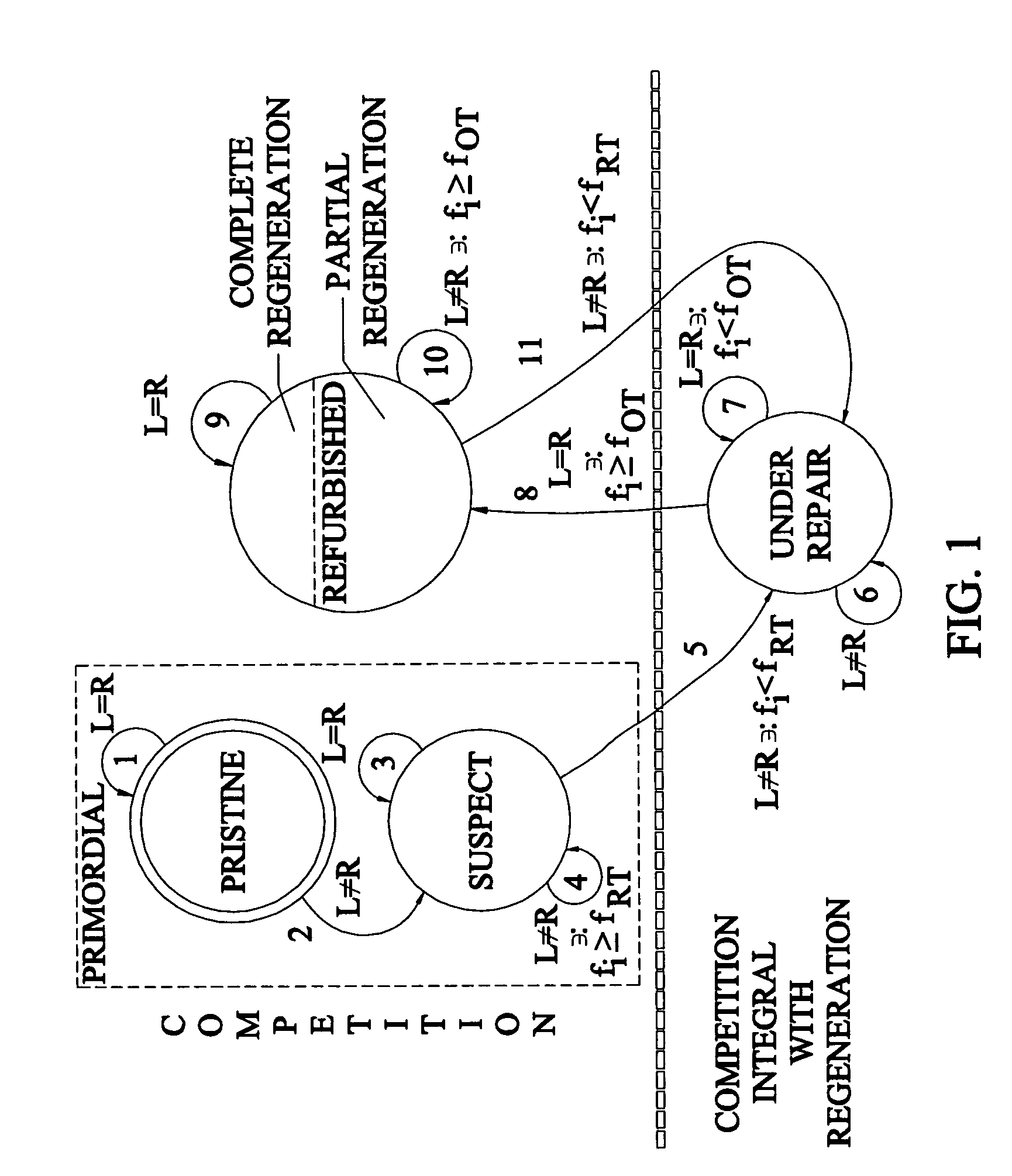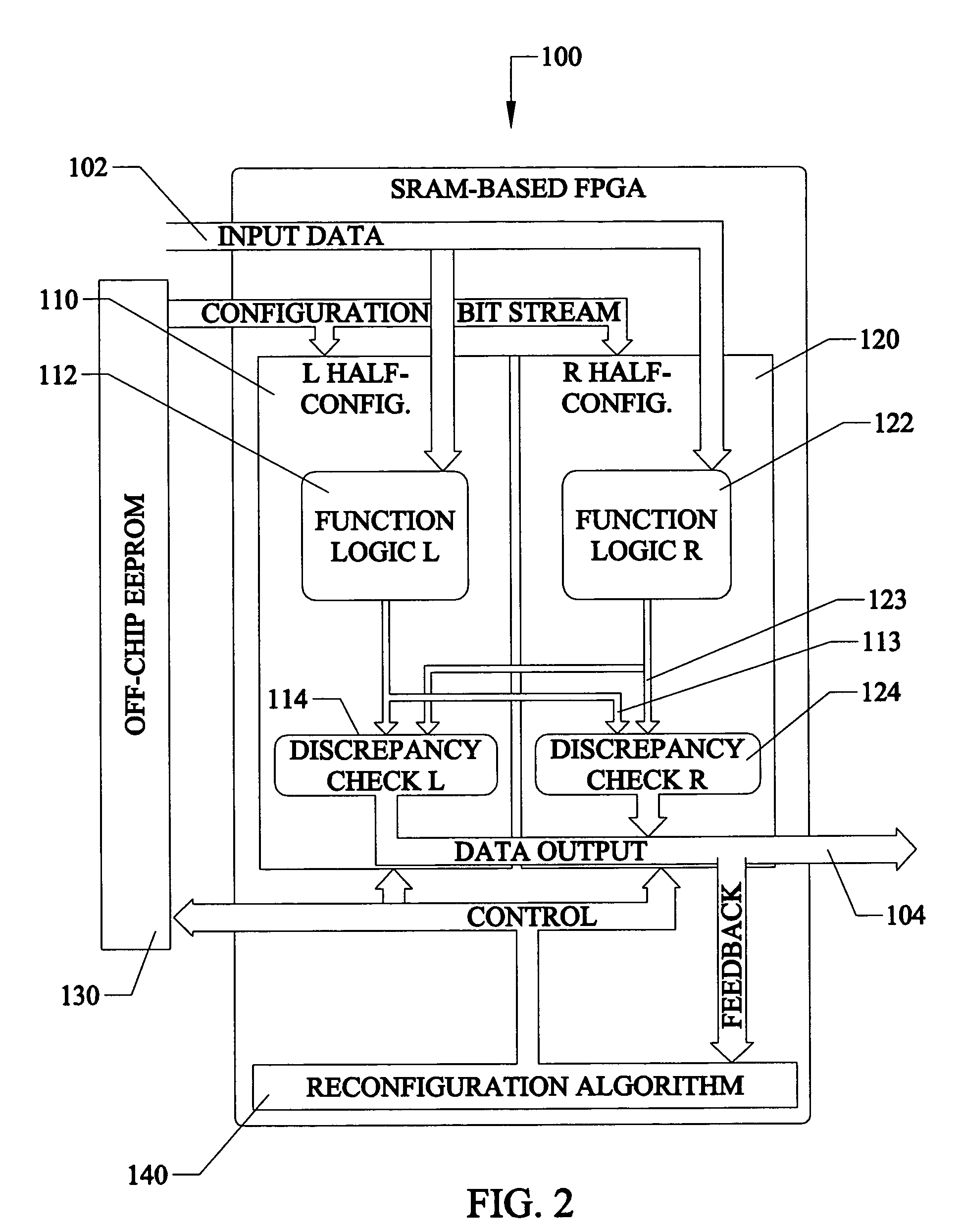Runtime-competitive fault handling for reconfigurable logic devices
- Summary
- Abstract
- Description
- Claims
- Application Information
AI Technical Summary
Benefits of technology
Problems solved by technology
Method used
Image
Examples
Embodiment Construction
[0040]Before explaining the disclosed embodiments of the present invention in detail it is to be understood that the invention is not limited in its application to the details of the particular arrangements shown since the invention is capable of other embodiments. Also, the terminology used herein is for the purpose of description and not of limitation.
[0041]The following is a list of the reference numbers used in the drawings and the detailed specification to identify components:
[0042]
1pristine L = R2suspect L ≠ R3suspect L = R4suspect L ≠ R, fi ≧ fRT5.under repair L ≠ R, fi RT6under repair L ≠ R7under repair L = R, fi OT8refurbished fi ≧ fOT9refurbished L = R10refurbished L ≠ R, fi ≧ fOT11under repair L ≠ R, fi RT100SRAM-based FPGA102input data104output data110L half-configuration112L function logic113L input114L discrepancy checker115L exclusive NOR116L buffer120R half-configuration122R function logic123R input124R discrepancy checker125R exclusive NOR126R buffer130SRAM140reconf...
PUM
 Login to View More
Login to View More Abstract
Description
Claims
Application Information
 Login to View More
Login to View More - R&D
- Intellectual Property
- Life Sciences
- Materials
- Tech Scout
- Unparalleled Data Quality
- Higher Quality Content
- 60% Fewer Hallucinations
Browse by: Latest US Patents, China's latest patents, Technical Efficacy Thesaurus, Application Domain, Technology Topic, Popular Technical Reports.
© 2025 PatSnap. All rights reserved.Legal|Privacy policy|Modern Slavery Act Transparency Statement|Sitemap|About US| Contact US: help@patsnap.com



